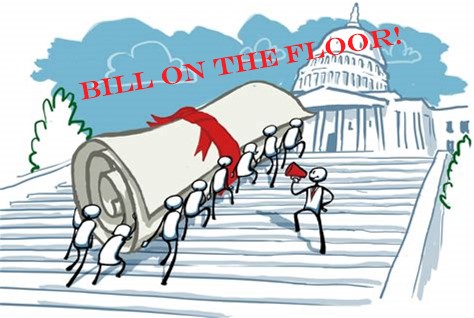Introduced in House (11/20/2024)
118th CONGRESS
2d Session
H. R. 10179
To direct the Secretary of Housing and Urban Development to award grants to States to develop and expand the industrialized construction of innovative residential dwelling units, and for other purposes.
IN THE HOUSE OF REPRESENTATIVES
November 20, 2024
Ms. Caraveo (for herself and Ms. Pettersen) introduced the following bill; which was referred to the Committee on Financial Services
A BILL
To direct the Secretary of Housing and Urban Development to award grants to States to develop and expand the industrialized construction of innovative residential dwelling units, and for other purposes.
Be it enacted by the Senate and House of Representatives of the United States of America in Congress assembled,
This Act may be cited as the “Innovative Housing Solutions and Affordability Act”.
SEC. 2. GRANTS TO DEVELOP AND EXPAND THE INDUSTRIALIZED CONSTRUCTION OF INNOVATIVE RESIDENTIAL DWELLING UNITS.
(a) Grants From The Secretary.—
(1) IN GENERAL.—The Secretary of Housing and Urban Development (referred to in this section as the “Secretary”) shall, not later than 1 year after the date of the enactment of this section, establish a program to award grants on a competitive basis to States to develop and expand the industrialized construction of innovative residential dwelling units.
(2) APPLICATION.—A State that seeks a grant under this subsection shall submit to the Secretary an application at such time and in such manner that the Secretary may require, and the application shall contain the following information:
(A) A plan for the State to provide subgrants under subsection (b).
(B) If the State intends to coordinate the provision of subgrants under subsection (b) with a Federal, State, or local program that is not established under this section, a plan for the State to coordinate the provision of the subgrants with the Federal, State, or local program.
(C) The ability of the State to match the grant by making available non-Federal funds to provide subgrants under subsection (b).
(D) Any other information that the Secretary may require.
(1) IN GENERAL.—A State that has received a grant under subsection (a) shall provide subgrants on a competitive basis to eligible entities for any of the following purposes:
(A) To reimburse not more than $350,000 of the operating expenses of an eligible entity.
(B) To provide, for each innovative residential dwelling unit that is constructed by an eligible entity, an incentive in an amount determined by the State—
(i) that is not greater than $6,000 for each such unit that is not a unit of affordable housing and an energy-efficient unit; and
(ii) that is greater than the incentive described in clause (i) for each such unit that is a unit of affordable housing and an energy-efficient unit.
(C) To provide a fixed incentive of $50,000 if an eligible entity agrees to construct not less than 10 percent of the innovative residential dwelling units under a subgrant of the State as affordable housing.
(D) Any other purpose that, as determined by the Secretary, would develop or expand the industrialized construction of innovative residential dwelling units.
(2) APPLICATION.—An eligible entity that seeks a subgrant from a State under this subsection shall submit to the State an application at such time and in such manner as the State may require, and the application shall contain any information that the State may require.
(3) LIMITATION ON SUBGRANT RECIPIENTS.—
(A) DEADLINE.—Not later than 2 years after the date on which an eligible entity receives a subgrant under this subsection, the eligible entity shall complete each activity for which the eligible entity received the subgrant.
(B) POSTPONEMENT.—The Secretary may, on a case-by-case basis, postpone the deadline for an eligible entity to complete an activity under subparagraph (A).
(C) SANCTIONS.—If the Secretary determines, after reasonable notice and opportunity for a hearing, that an eligible entity has failed to complete an activity under subparagraph (A) by the deadline under subparagraph (A) or subparagraph (B) (whichever is applicable), the Secretary may—
(i) impose a civil monetary penalty on the entity;
(ii) prohibit the entity from receiving another subgrant under this subsection for a period of time determined by the Secretary; or
(iii) take a combination of the actions described in clauses (i) and (ii).
(D) CONSIDERATIONS.—In determining the extent of any penalty or prohibition to be imposed under subparagraph (C), the Secretary shall consider the severity of the eligible entity’s violation under this paragraph.
(c) Reporting Requirement.—Not later than 2 years after the date on which a State first provides a subgrant under subsection (b), the State shall submit to the Secretary a report that includes the following information with respect to the subgrants:
(1) The number of applications that the State has received for a subgrant.
(2) The average cost to construct an innovative residential dwelling unit under a subgrant of the State.
(3) The average cost to purchase such a unit.
(4) The number of such units.
(5) The number of such units that are affordable housing.
(6) Any other information that the Secretary may require.
(d) Authorization Of Appropriations.—There is authorized to be appropriated to the Secretary $75,000,000 for fiscal years 2025 through 2029 to carry out this section.
(e) Definitions.—In this section:
(1) AFFORDABLE HOUSING.—The term “affordable housing” means housing that is 1 or more of the following:
(A) Compliant with the conditions set forth in section 215 of the Cranston-Gonzalez National Affordable Housing Act (42 U.S.C. 12745).
(B) Eligible for financing under subparagraph (A) or (B) of section 10(j)(2) of the Federal Home Loan Bank Act (12 U.S.C. 1430(j)(2)).
(2) ELIGIBLE ENTITY.—The term “eligible entity” means an entity that—
(A) employs fewer than 500 individuals; and
(i) industrialized construction of innovative residential dwelling units;
(ii) an innovative technology or process that significantly reduces the on-site time and labor necessary to construct residential dwelling units, as determined by the Secretary; or
(iii) a combination of the activities described in clauses (i) and (ii).
(3) ENERGY-EFFICIENT UNIT.—The term “energy-efficient unit” means a residential dwelling unit for which the annual household site energy consumption is designed to be less than the average annual household site energy consumption for the corresponding type of residential dwelling unit in the census region where the residential dwelling unit is located, as measured by the most recent Residential Energy Consumption Survey of the Energy Information Administration.
(4) INNOVATIVE RESIDENTIAL DWELLING UNIT.—The term “innovative residential dwelling unit” means a residential dwelling unit that—
(A) is modular, panelized, constructed with 3–D printing technology, or constructed under a process approved by a State; and
(B) is compliant with each building code that applies to the site on which the residential dwelling unit is to be located.
(5) MODULAR.—The term “modular” means, with respect to a residential dwelling unit, being composed of not less than 2 modules built in a factory, transported to the site of the residential dwelling unit, and attached to the foundation of the residential dwelling unit.
(6) PANELIZED.—The term “panelized” means, with respect to a residential dwelling unit, being composed of panels built in a factory, transported to the site of the residential dwelling unit, and attached to the foundation of the residential dwelling unit.
(7) STATE.—The term “State” means each State, each federally recognized Indian Tribe, the District of Columbia, and each territory or possession of the United States.


